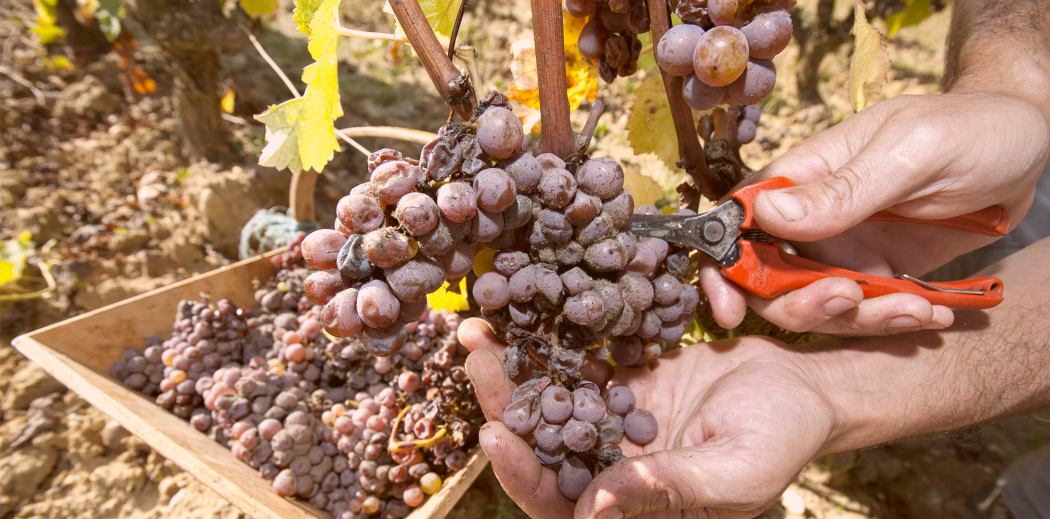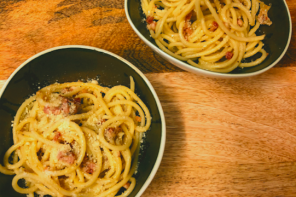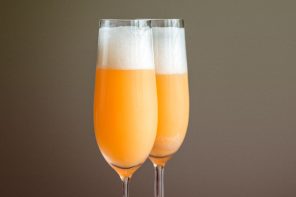Like many of mankind’s greatest inventions, the discovery of noble rot was quite by accident. Or so the legend goes. These dessert wines are the inimitable golden nectars made in a handful of regions around the world. The rot is caused by botrytis cinerea, a mercurial fungus that needs climatic conditions to be just so before developing. How does it work? The weather must be warm and humid but not wet; excessive dampness can spell disaster in the vineyard. Botrytis spores then infect grapes by puncturing their skins, causing the berries to dehydrate, raisinate and leave behind the best parts of the grape: the sugars and acids.
It’s the fungal equivalent of Jekyll and Hyde. When botrytis is bad it leads to bunch rot, also called gray rot which can ruin an entire harvest. And it doesn’t just affect grapes. You wouldn’t want to find it on your strawberries, tomatoes, or smokable plants of dubious legality. But under the right conditions, botrytis can be a very good thing. Some of the world’s greatest wines see botrytis: the seductive Sauternes in Bordeaux, luscious German wines of Auslese ripeness level and up, the sublime Austrian Ausbruch, that “wine of kings, king of wines” Tokaji from Hungary. Over the border in Slovakia, the Tokaj region continues and even in Romania, which was also formerly part of the Kingdom of Hungary, you’ll find botrytized wine in the form of Grasă de Cotnari. Across the ocean and around the globe, New World winemakers are making some pretty fine noble rot wines as well.
Botrytis adds another layer of complexity to wine; honey, ginger, saffron, and a profusion of other spices, in addition to the ultra concentrated sugars and flavors inherent in a given grape variety. This is what makes botrytis affected bunches ripe for the picking in dessert wine production.
What inspired some long ago farmer to vinify his seemingly ruined grapes? Every country has its own origin story. In Germany, overripe, rotten grapes were purportedly given to peasants who made them into delicious wines. We know for certain that Schloss Johannisberg made the first German late harvest wine from botrytized grapes in 1775. Meanwhile, Hungarian lore has 16th-century minister Laczkó Máté Szepsi as the man who created the first aszú (noble rot affected grapes) wine. Hungary’s records go back a solid two hundred years before Schloss Johannisberg’s first foray into the style. Legend has it that Sauternes came later, some time in the 18th century, although this is disputed by historians.
The reason for the hefty price tag associated with noble rot wines is twofold: the incredibly specific weather conditions needed to foster botrytis and labor. Harvest must occur by hand and is usually done in several passes (called tries in French), an expensive venture. If you’re willing to shell out a few clams for these nectars and by gum, you should, classic pairings include foie gras, blue cheese, and fruit desserts but they’re equally good with pork, spice, and fried foods. The search for a wine to drink with your bacon stuffed jalapeño poppers is officially over.








